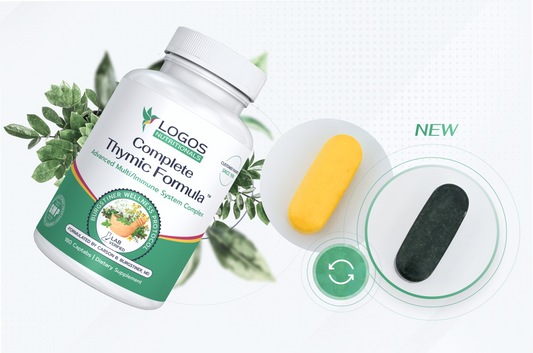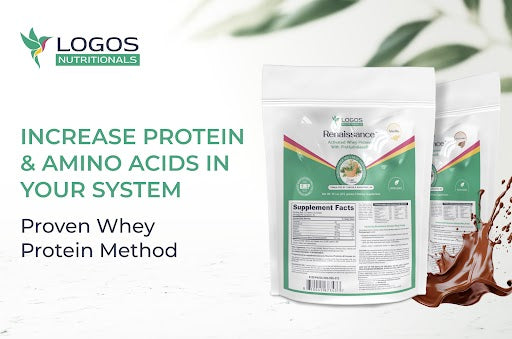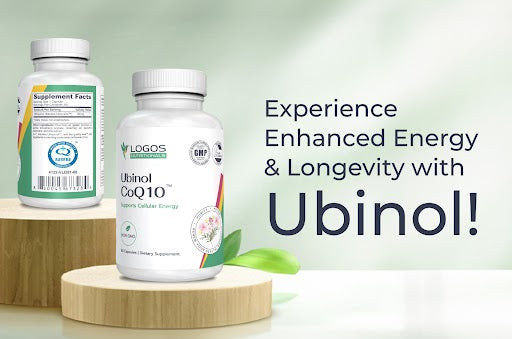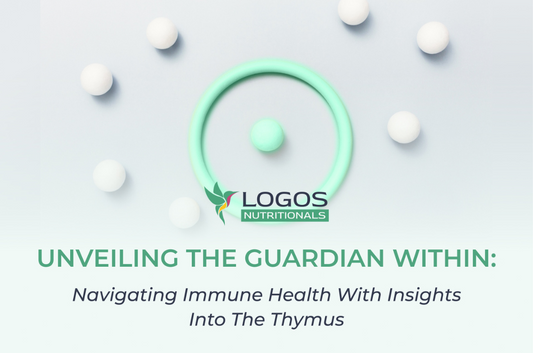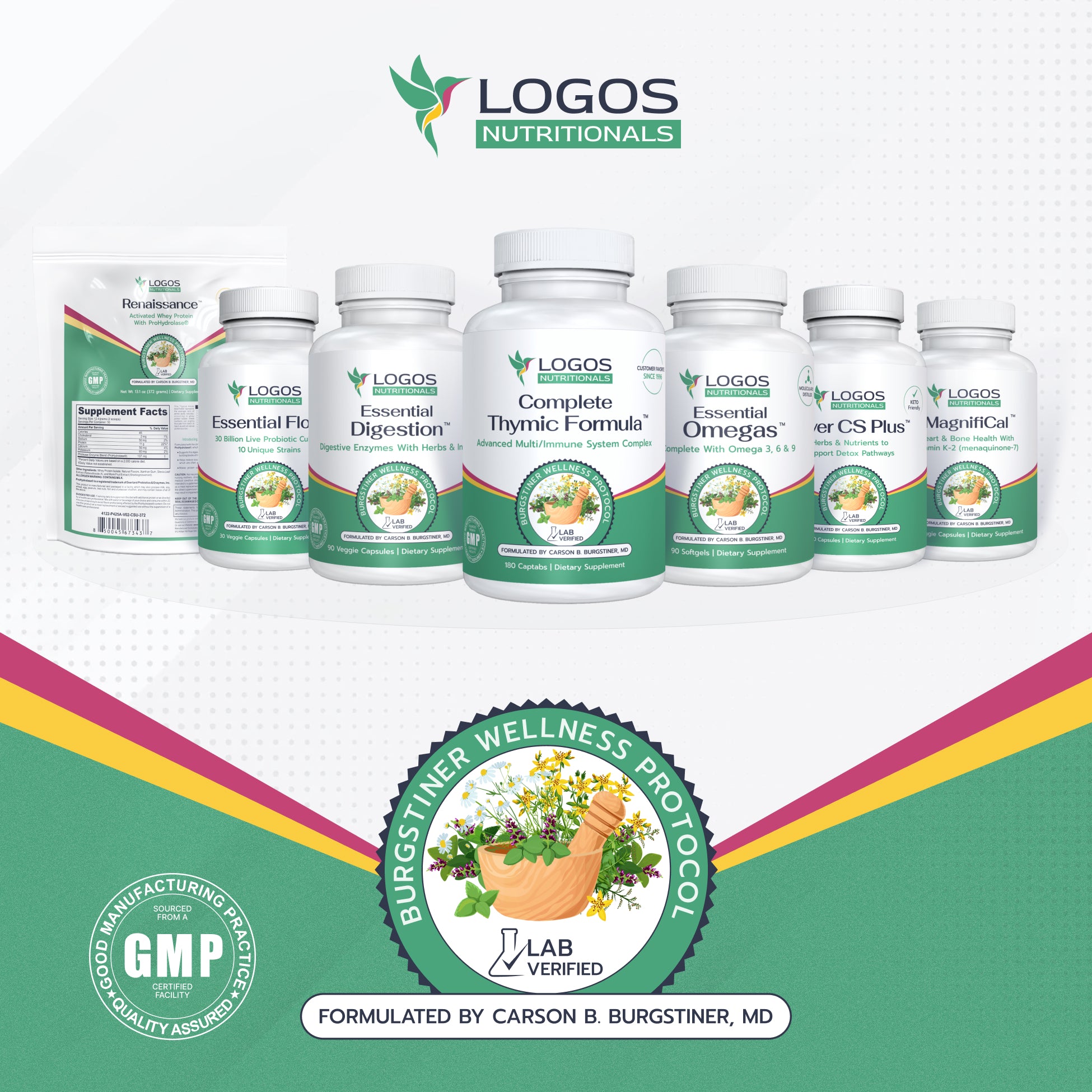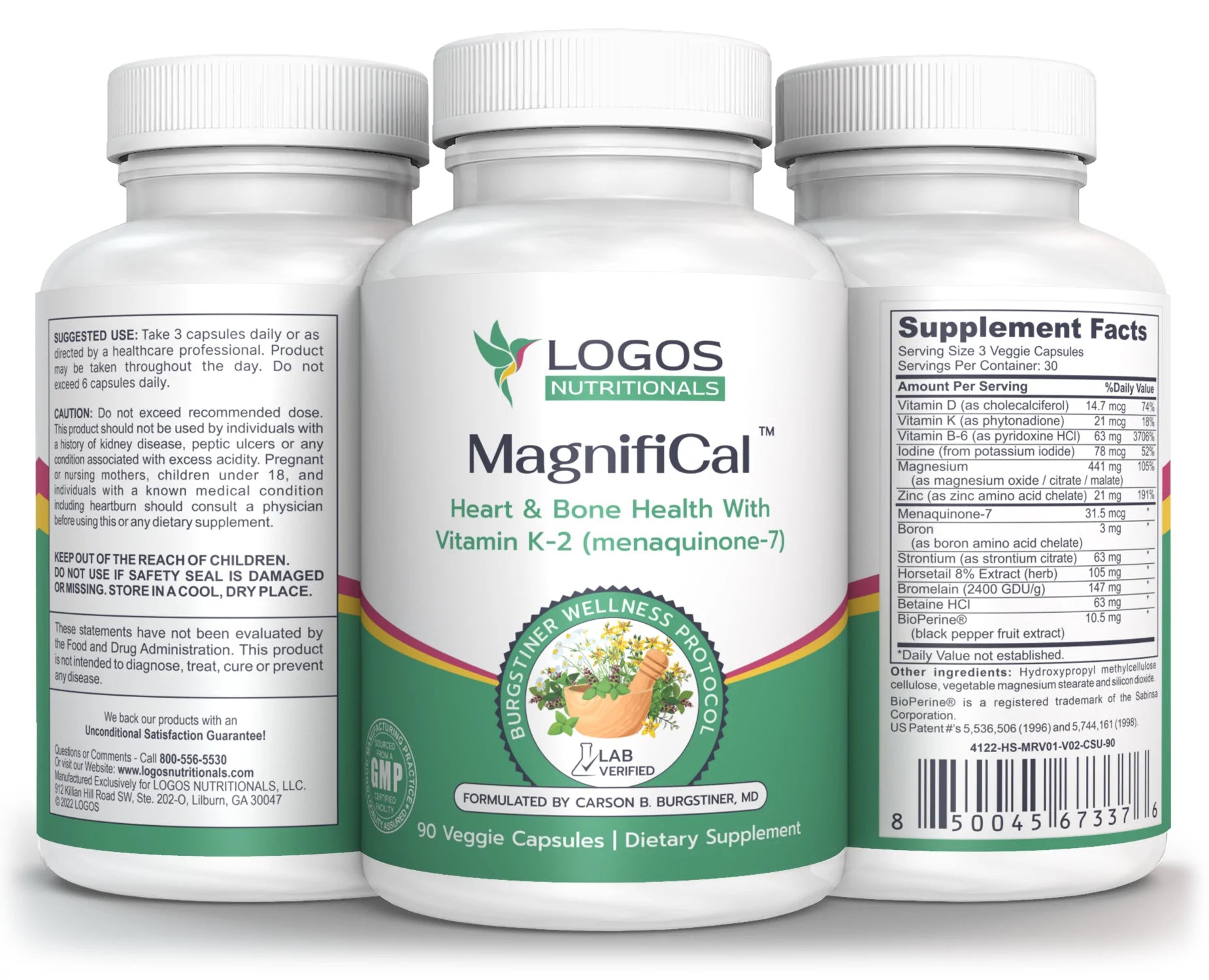Amino Acids Detox the Body and Strengthen Immunity for Good Health
Amino acids are molecules that detox the body and strengthen immunity for good health. Containing both amino and carboxylic acid functional groups, amino acids are a class of simple organic compounds containing carbon, hydrogen, oxygen, nitrogen, and in certain cases sulfur. These compounds are the biochemical building blocks of proteins.
Amino acids form short polymer chains called peptides or polypeptides which in turn form structures called proteins. Each amino acid has at least one carboxyl (COOH) group, which is acidic, and one amino (NH2) group, which is basic. Amino acids join together in long chains, the amino group of one amino acid linking with the carboxyl group of another. The linkage is known as a peptide bond, and a chain of amino acids is known as a polypeptide. Proteins are large, naturally occurring polypeptides. Hundreds of different amino acids exist in nature, and about two dozen of them are important to human nutrition. Essential amino acids are amino acids that cannot be synthesized in the body in adequate amounts and must be obtained from the diet. The essential amino acids are isoleucine, leucine, lysine, methionine, phenylalanine, threonine, tryptophan, and valine.
Non-essential amino acids are those that the body can manufacture from an available source of nitrogen and a carbon skeleton. The nonessential amino acids are arginine, alanine, asparagine, aspartic acid, cysteine, glutamine, glutamic acid, glycine, proline, serine, and tyrosine.
Semi-essential amino acids are ones that can sometimes be made internally if conditions are right. Histidine is considered semi-essential because the body does not always require dietary sources of it. Other amino acids, such as carnitine, are used by the body in ways other than protein-building and are often used therapeutically.
Amino acids are needed to build and repair the various proteins used in the growth, repair and maintenance of body tissues. Therefore, they play countless roles in human health and disease. Generally, amino acids should be supplemented in complex just as they are found and acquired in nature, but there are exceptions. For example, lysine is often taken alone for its antiviral properties and glutamine is often used to rebuild the lining of the gut, to help build lean muscle mass or to prevent muscle wasting.
Proteins
Proteins are any of a group of complex organic compounds containing carbon, hydrogen, nitrogen and sulfur. Proteins are an essential substance in the diets of humans and most animals because of their constituent amino acids. A protein molecule is a long chain of amino acids linked by peptide bonds. Many different proteins are found in the cells of living organisms, but they are all made up of the same 20 amino acids, joined together in varying combinations.
Different amino acids are commonly found in proteins, each protein having a unique, genetically defined amino-acid sequence, which determines its specific shape and function. They serve as enzymes, structural elements, hormones, immunoglobulins, etc. and are involved in oxygen transport, muscle contraction, electron transport, and other activities.
Proteins are involved in controlling the metabolism of cells, controlling the structure and movement of cells and larger structures and coordinating the response of cells to internal and external factors. Nutritionally, complete proteins are those which contain the right concentrations of the amino acids that humans cannot synthesize from other amino acids or nitrogenous sources.
Whey Protein Isolate is considered the cleanest, most complete source of amino acids available today. It is a supplement in high demand for athletes wanting to build lean muscle mass, but it is also a powerful anti-aging tool.
Common Amino Acids
Alanine is one of the simplest of the amino acids and is involved in the energy-producing breakdown of glucose. L-alanine is created in muscle cells from glutamate in a process called transamination. Alanine comes from the breakdown of DNA or the dipeptides, anserine and carnosine, and the conversion of pyruvate, a compound in carbohydrate metabolism. Alanine is used by the body to build proteins. Alanine is vital for the production of protein, essential for proper function of the central nervous system and helps form neurotransmitters. Alanine is necessary for the promotion of proper blood glucose levels from dietary protein.
Arginine is a complex amino acid that is often found at the active (or catalytic) site in proteins and enzymes due to its amine-containing side chain. Arginine is involved in multiple areas of human physiology and metabolism; most notably it moderates HGH and nitric acid production. Arginine plays an important role in cell division, the healing of wounds, removing ammonia from the body, immune function, and the release of hormones. Arginine has a number of functions in the body such as assisting in wound healing, hormone production, immune function and removal of excess ammonia.
Asparagine is the -amide of aspartic acid synthesized from aspartic acid and ATP (adenosine triphosphate). Asparagine is one of the principal and frequently the most abundant amino acids involved in the transport of nitrogen. Asparagine is very active in converting one amino acid into another (amination and transamination) when the need arises. Asparagine serves as an amino donor in liver transamination processes.
Aspartic acid is alanine with one of the hydrogens replaced by a carboxylic acid group. Aspartic acid is a part of organic molecules containing an amino group, which can combine in linear arrays to form proteins in living organisms. Although aspartic acid is considered a non-essential amino acid, it plays a paramount role in metabolism during construction of other amino acids and biochemicals in the citric acid cycle. Among the biochemicals that are synthesized from aspartic acid are asparagine, arginine, lysine, methionine, threonine, isoleucine, and several nucleotides.
Carnitine is a non-essential amino acid produced in the liver, brain and the kidneys from the essential amino acids methionine and lysine. Carnitine is a nutrient responsible for the transport of long-chain fatty acids into the energy-producing centers of the cells (known as the mitochondria). Carnitine is recommended as a daily supplement to help maintain blood lipid profile and promote fatty acid utilization within heart muscle.
Carnosine is a dipeptide composed of the covalently bonded amino acids alanine and histidine and is found in the brain, heart, skin, muscles, kidneys and stomach. Carnosine is one of the most important and potent natural antioxidant agents which act as universal antioxidants both in the lipid phase of cellular and biological membranes and in the aqueous environment protecting lipids and water-soluble molecules like proteins (including enzymes), DNA and other essential macromolecules from oxidative damage mediated by reactive oxygen species and lipid peroxides.
Creatine is a natural derivate of an amino acid and is synthesized in the liver, kidneys and pancreas out of arginine, methionine and glycine. Creatine functions to increase the availability of cellular ATP, adenosine triphosphate. Creatine works by acting on mechanisms of ATP by donating a phosphate ion to increase the availability of ATP. Creatine is stored in muscle cells as phosphocreatine and is used to help generate cellular energy for muscle contractions.
Citrulline is a precursor to arginine and is involved in the formation of urea in the liver. Arginine is a contributing member of the various amino acids found in the urea cycle, which is responsible for detoxifying ammonia. Citrulline supports the body in optimizing blood flow through its conversion to l-arginine and then nitric oxide (NO).
Cysteine is a naturally occurring hydrophobic amino acid which has a sulfhydryl group and is found in most proteins. Cysteine is one of the key components in all living things. N-acetyl cysteine (which contains cysteine) is the most frequently used form of cysteine. N-acetyl-L-cysteine (NAC) helps break down mucus and detoxify harmful substances in the body. Both cysteine and NAC have been shown to increase levels of the antioxidant glutathione.
Cystine is the product of an oxidation between the thiol side chains of two cysteine amino acids. As such, cystine is not considered one of the 20 amino acids. This oxidation product is found in abundance in a variety of proteins such as hair keratin, insulin, the digestive enzymes chromotrypsinogen A, papain, and trypsinogen where it is heavily involved in stabilizing the tertiary structure of these macromolecules.
Gamma-aminobutyric acid (GABA) is a non-essential amino acid formed from glutamic acid with the help of vitamin B6. GABA (gamma-aminobutyric acid) is found in almost every region of brain, and is formed through the activity of the enzyme glutamic acid decarboxylase (GAD). GABA serves as a inhibitory neurotransmitter to block the transmission of an impulse from one cell to another in the central nervous system.
Glutamic acid is biosynthesized from a number of amino acids including ornithine and arginine. When aminated, glutamic acid forms the important amino acid glutamine. Because it has a carboxylic acid moiety on the side chain, glutamic acid is one of only two amino acids (the other being aspartic acid) that has a net negative charge at physiological pH. This negative charge makes glutamic acid a very polar molecule and it is usually found on the outside of proteins and enzymes where it is free to interact with the aqueous intracellular surroundings.
Glutamine is one of the twenty amino acids generally present in animal proteins. Glutamine is the most abundant amino acid in the body. Over 61% of skeletal muscle tissue is glutamine. It contains two ammonia groups, one from its precursor, glutamate, and the other from free ammonia in the bloodstream. Glutamine is involved in more metabolic processes than any other amino acid. Glutamine is converted to glucose when more glucose is required by the body as an energy source. Glutamine assists in maintaining the proper acid/alkaline balance in the body, and is the basis of the building blocks for the synthesis of RNA and DNA.
Glutathione (GSH) is a tripeptide composed of three different amino acids: glutamate, cysteine and glycine that has numerous important functions within cells. Glutathione plays a role in such diverse biological processes as protein synthesis, enzyme catalysis, transmembrane transport, receptor action, intermediary metabolism, and cell maturation. Glutathione acts as an antioxidant used to prevent oxidative stress in most cells and help to trap free radicals that can damage DNA and RNA.
Glycine is the simplest amino acid and is the only amino acid that is not optically active (it has no stereoisomers). The body uses it to help the liver in detoxification of compounds and for helping the synthesis of bile acids. It has a sweet taste and is used for that purpose. Glycine is essential for the synthesis of nucleic acids, bile acids, proteins, peptides, purines, adenosine triphosphate (ATP), porphyrins, hemoglobin, glutathione, creatine, bile salts, one-carbon fragments, glucose, glycogen, and l-serine and other amino acids.
Histidine is one of the basic (with reference to pH) amino acids due to its aromatic nitrogen-heterocyclic imidazole side chain. Histidine is the direct precursor of histamine, it is also an important source of carbon atoms in the synthesis of purines. Histidine is needed to help grow and repair body tissues, and to maintain the myelin sheaths that protect nerve cells. It also helps manufacture red and white blood cells, and helps to protect the body from heavy metal toxicity. Histamine stimulates the secretion of the digestive enzyme gastrin.
Hydroxyproline is derived from the amino acid proline and is used almost exclusively in structural proteins including collagen, connective tissue in mammals, and in plant cell walls. An unusual feature of this amino acid is that it is not incorporated into collagen during biosynthesis at the ribosome, but is formed from proline by a posttranslational modification by an enzymatic hydroxylation reaction. Non-hydroxylated collagen is commonly termed pro-collagen.
Isoleucine belongs to a special group of amino acids called branched-chain amino acids (BCAAs), which are needed to help maintain and repair muscle tissue. Leucine and valine are other two branched-chain amino acids. Isoleucine is an essential amino acid that is not synthesized by mammalian tissues. Isoleucine is needed for hemoglobin formation and also helps to maintain regular energy levels. Isoleucine is important for stabilizing and regulating blood sugar and energy levels and is required through the diet as it cannot be produced by our bodies.
Leucine is a member of the branched-chain amino acid family, along with valine and isoleucine. The branched-chain amino acids (BCAAs) are found in proteins of all life forms. Leucine ties glycine for the position of second most common amino acid found in proteins with a concentration of 7.5 percent on a molar basis compared to the other amino acids. Leucine is necessary for the optimal growth of infants and for the nitrogen balance in adults.
Lysine is an essential amino acid that has a net positive charge at physiological pH values making it one of the three basic (with respect to charge) amino acids. Lysine is an essential amino acid because it cannot be synthesized in the body and its breakdown is irreversible. It is an essential building block for all protein, and is needed for proper growth and bone development in children. Lysine helps the body absorb and conserve calcium and it plays an important role in the formation of collagen.
Methionine is an important amino acid that helps to initiate translation of messenger RNA by being the first amino acid incorporated into the N-terminal position of all proteins. Methionine supplies sulfur and other compounds required by the body for normal metabolism and growth. Methionine reacts with adenosine triphosphate to form S-adenosyl methionine. S-adenosyl methionine is the principal methyl donor in the body and contributes to the synthesis of many important substances, including epinephrine and choline.
Ornithine plays an important role in the urea cycle and is the precursor of the amino acids citrulline, glutamic acid, and proline. Another primary role of ornithine is being an intermediate in arginine biosynthesis, although this is due to its participation in the urea cycle (responsible for the production of urea). Ornithine is not directly incorporated into proteins and enzymes and does not have a codon in the genetic code.
Phenylalanine is an essential amino acid that is also one of the aromatic amino acids that exhibit ultraviolet radiation absorption properties with a large extinction coefficient. Phenylalanine is part of the composition of aspartame, a common sweetener found in prepared foods (particularly soft drinks, and gum). Phenylalanine plays a key role in the biosynthesis of other amino acids and some neurotransmitters.
Proline is a non-essential amino acid that is involved in the production of collagen and in wound healing. Proline is the precursor for hydroxyproline, which the body incorporates into collagen, tendons, ligaments, and the heart muscle. Proline plays important roles in molecular recognition, particularly in intracellular signalling. Proline is an important component in certain medical wound dressings that use collagen fragments to stimulate wound healing.
Serine - The methyl side chain of serine contains a hydroxy group making this one of two amino acids that are also alcohols. Serine plays a major role in a variety of biosynthetic pathways including those involving pyrimidines, purines, creatine, and porphyrins. Serine has sugar-producing qualities, and is very reactive in the body. It is highly concentrated in all cell membranes, aiding in the production of immunoglobulins and antibodies.
Taurine is a non-essential sulfur-containing amino acid that functions with glycine and gamma-aminobutyric acid as a neuroinhibitory transmitter. Taurine is the body's water soluble anti-oxidant, and inhibitory neurotransmitter. The major antioxidant activity of taurine derives from its ability to scavenge the reactive oxygen species hypochlorite. Taurine plays an important role in numerous physiological functions.
L-theanine is the predominant amino acid in green tea and makes up 50% of the total free amino acids in the plant. Theanine is considered to be the main component responsible for the taste of green tea. L-theanine is involved in the formation of the inhibitory neurotransmitter, gamma amino butyric acid (GABA). GABA influences the levels of two other neurotransmitters, dopamine and serotonin, producing a relaxation effect.
Threonine is another alcohol-containing amino acid that can not be produced by metabolism and must be taken in the diet. Threonine is an important component in the formation of protein, collagen, elastin and tooth enamel. It is also important for production of neurotransmitters and health of the nervous system.
Tryptophan is an essential amino acid formed from proteins during digestion by the action of proteolytic enzymes. Tryptophan is also a precursor for serotonin (a neurotransmitter) and melatonin (a neurohormone). Tryptophan may enhance relaxation and sleep, relieves minor premenstrual symptoms, soothes nerves and anxiety, and reduces carbohydrate cravings.
Tyrosine is metabolically synthesized from phenylalanine to become the para-hydroxy derivative of that important amino acid. Tyrosine is a precursor of the adrenal hormones epinephrine, norepinephrine, and the thyroid hormones, including thyroxine. L-tyrosine, through its effect on neurotransmitters, is used to treat conditions including mood enhancement, appetite suppression, and growth hormone (HGH) stimulation.
Valine is a branched-chain amino acid (BCAA) that is closely related to leucine and isoleucine both in structure and function. Valine is a constituent of fibrous protein in the body. As a branched-chain amino acid (BCAA), valine has been found useful in treatments involving muscle, mental, and emotional upsets, and for insomnia and nervousness. Valine may help treat malnutrition associated with drug addiction.



